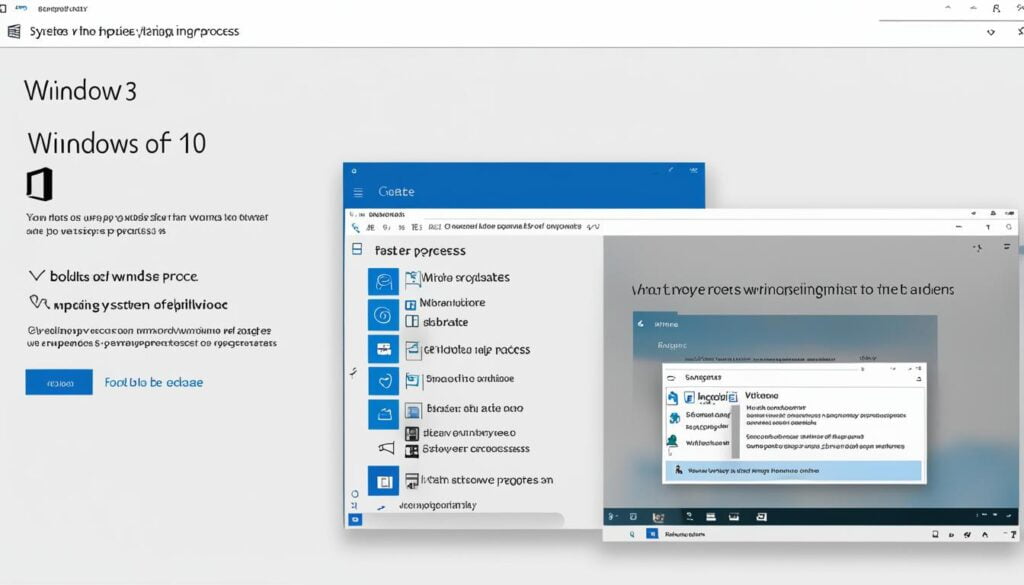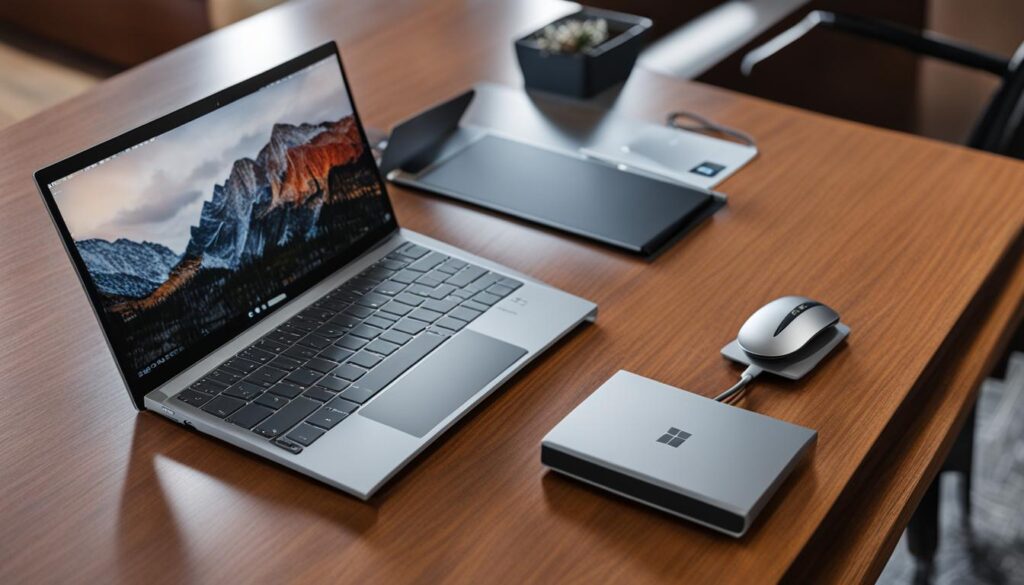Contents
- 1 Check Touchpad Settings
- 2 Restart Your Computer
- 3 Update Touchpad Drivers
- 4 Perform Windows 10 Update
- 5 Troubleshoot Advanced Options
- 6 External Touchpad Issues
- 7 Uninstall and Reinstall Touchpad Driver
- 8 Update Operating System
- 9 Conclusion
- 10 FAQ
- 10.1 How can I fix touchpad issues on Windows 10?
- 10.2 How do I check my touchpad settings?
- 10.3 How do I restart my computer?
- 10.4 How do I update touchpad drivers on Windows 10?
- 10.5 How do I perform a Windows 10 update?
- 10.6 How can I troubleshoot touchpad issues using advanced options?
- 10.7 What should I do if I’m facing issues with an external touchpad device?
- 10.8 How can I uninstall and reinstall the touchpad driver?
- 10.9 Why should I update my operating system?
- 10.10 What should I do if none of the solutions work?
If you’re experiencing issues with your touchpad on Windows 10, don’t worry – there are simple solutions available to fix the problem. Nothing is more frustrating than a touchpad that isn’t working properly, but with a few troubleshooting steps, you can get it up and running again in no time.
Whether your touchpad isn’t responding at all or is behaving erratically, these quick solutions will help you resolve the issue and regain control over your touchpad functionality.
Before we delve into the troubleshooting steps, it’s important to note that touchpad issues can stem from various causes, such as driver conflicts, software glitches, or hardware malfunctions. By following these steps, you can narrow down the root cause and address the specific problem you’re facing.
Now, let’s get started with the troubleshooting process to fix your touchpad issues on Windows 10.
Key Takeaways:
- Check your touchpad settings in the Windows 10 Settings menu.
- Restart your computer to resolve any temporary glitches.
- Update your touchpad drivers to ensure compatibility and bug fixes.
- Perform a Windows 10 update to install the latest drivers.
- Explore advanced options, such as system restore or disk error repair.
Check Touchpad Settings
One of the first things you should do when facing touchpad issues on Windows 10 is to check your touchpad settings. By adjusting the touchpad settings, you can enable or disable the touchpad functionality and customize its behavior according to your preferences.
To access the touchpad settings:
- Click on the Start menu located at the bottom left corner of your screen.
- Select Settings from the menu.
- In the Settings window, click on Devices.
- Navigate to the Touchpad section on the left sidebar.
Once you’re in the Touchpad section, make sure that the touchpad toggle switch is turned on to enable the touchpad functionality. This allows you to use the touchpad for navigating your computer.
Additionally, you can adjust other touchpad settings such as sensitivity, scrolling speed, and gestures from the Touchpad section. By customizing these settings, you can optimize the touchpad performance to suit your needs and preferences.
By checking and configuring the touchpad settings, you can ensure that the touchpad is enabled and tailored to your liking, providing a smooth and intuitive user experience.
Restart Your Computer
Sometimes, a simple restart can resolve touchpad issues on Windows 10. Restarting your computer can help reset any temporary glitches or conflicts that may be causing the touchpad problem. To restart your computer, follow these steps:
- Click on the Start menu button.
- Select Power.
- Choose the Restart option.
Allow your computer to restart completely and see if the touchpad starts working properly. This will help in refreshing the system and resolving any minor software issues. If the touchpad still doesn’t work, you can try other troubleshooting steps mentioned in this article.

Quote:
“A restart can do wonders for resolving touchpad problems. It’s a simple and effective troubleshooting step that often gets overlooked.” – TechGuruXYZ
Common Touchpad Issues and Their Solutions
| Issue | Solution |
|---|---|
| Touchpad not responding | Restart your computer, update touchpad drivers |
| Touchpad cursor erratic | Adjust touchpad sensitivity settings, update touchpad drivers |
| Touchpad gestures not working | Enable touchpad gestures in settings, update touchpad drivers |
| Touchpad freezes randomly | Restart your computer, update touchpad drivers |
The above table highlights some common touchpad issues and their corresponding solutions. By restarting your computer, you give it a fresh start, which can often help resolve touchpad-related problems. However, if the issue persists, you may need to try other troubleshooting methods or seek further assistance.
Update Touchpad Drivers
Updating your touchpad drivers can often fix touchpad problems. By installing the latest driver software, you can ensure compatibility with Windows 10 updates and enhance the performance of your touchpad.
To update your touchpad drivers, follow these steps:
- Open the Device Manager by right-clicking the Start button and selecting Device Manager.
- Locate the touchpad device in the list of hardware devices.
- Right-click the touchpad device and select Update driver.
- Choose the option to Search automatically for updated driver software.
The Device Manager will search for and install the latest touchpad drivers. Once the installation is complete, restart your computer to apply the changes.
Updating your touchpad drivers can be an effective solution to resolve touchpad-related issues in Windows 10. It ensures that your touchpad operates smoothly, keeping you productive and efficient.
Perform Windows 10 Update
If you’re experiencing touchpad issues on your Windows 10 device, performing a Windows 10 update may help resolve the problem. Updating your Windows 10 operating system ensures that you have the latest versions of drivers, including any updates for your touchpad.
To perform a Windows 10 update, follow these steps:
- Open the Start menu on your Windows 10 device.
- Select “Settings” from the menu.
- In the Settings window, choose “Update & Security.”
- Click on “Check for updates.”
Windows 10 will now scan for available updates and automatically install them on your device. This includes updates for your touchpad driver, if any are available. By keeping your Windows 10 up to date, you ensure that your touchpad is compatible with the latest software versions, reducing the chances of encountering touchpad issues.
Benefits of Performing a Windows 10 Update
Performing a Windows 10 update offers several benefits:
- Improved compatibility: Updating your operating system ensures that your touchpad driver is compatible with the latest software versions, reducing the risk of compatibility issues.
- Bug fixes: Windows 10 updates often include bug fixes and patches that address known touchpad issues, providing a smoother user experience.
- New features: Updates may introduce new features and enhancements for your touchpad, allowing you to take advantage of improved functionality.
| Windows 10 Update Checklist |
|---|
| Check for updates regularly to stay up to date. |
| Install all available updates, including touchpad-specific driver updates. |
| Restart your computer after installing updates to ensure they take effect. |

By performing a Windows 10 update, you can ensure that your touchpad is optimized for the latest software versions and minimize the risk of encountering touchpad issues. Keep your device up to date and enjoy smooth touchpad functionality on your Windows 10 computer.
Troubleshoot Advanced Options
If the previous steps didn’t solve the touchpad problem, you can try troubleshooting using advanced options in Windows 10. This includes options like resetting your computer, performing a system restore, or using Command Prompt to repair disk errors. Access the advanced options menu by restarting your computer and pressing the relevant function key (e.g., F2, F9, F10, or F12) to enter BIOS/UEFI.

When all else fails, advanced options can provide additional solutions for troubleshooting touchpad issues in Windows 10. These options allow you to perform more advanced tasks that can help resolve persistent problems.
Resetting your computer: This option allows you to reset your computer to its default settings, which can help eliminate any software conflicts that may be affecting your touchpad. Be aware that resetting your computer will remove all your personal files and installed apps, so make sure to back up any important data before proceeding.
Performing a system restore: System restore allows you to revert your computer’s settings to a previous state. If you remember a time when your touchpad was working correctly, you can choose a restore point from that period to undo any changes that may have caused the issue. System restore does not affect your personal files, but it will remove any recently installed apps or drivers.
Using Command Prompt to repair disk errors: Command Prompt is a powerful tool that allows you to execute commands to fix various issues on your computer. By running specific commands in Command Prompt, you can scan and repair disk errors that may be causing touchpad problems. This process can help resolve any corrupted files or system inconsistencies.
Remember to follow the instructions carefully when using advanced options, as they can have significant effects on your computer. It’s always a good idea to create a backup of your important files before attempting any troubleshooting steps.
External Touchpad Issues
If you’re using an external touchpad device, it’s essential to ensure that all necessary connections are properly established and functions are active. Here are some troubleshooting tips for dealing with external touchpad issues:
Check the Power Switch
First and foremost, make sure that the power switch on your external touchpad is turned on. It may seem obvious, but sometimes a simple oversight can cause frustration. Verify that the device has sufficient battery power, or if it’s rechargeable, connect it to a power source and charge it fully.
Verify Wireless Connection
For wireless touchpads, it’s crucial to establish a stable connection with your computer. Double-check that the USB receiver is securely connected to your computer’s USB port. If your touchpad requires pairing, ensure that it’s properly paired with your computer by following the manufacturer’s instructions. If you encounter connection issues, try removing the device from the Windows 10 settings and pairing it again to establish a fresh connection.
Remember, in some cases, a computer restart might be necessary for the changes to take effect.

With these troubleshooting steps for external touchpad issues, you can optimize your experience and ensure seamless functionality while using an external touchpad with your Windows 10 computer.
Uninstall and Reinstall Touchpad Driver
If the touchpad problem persists, try uninstalling and reinstalling the touchpad driver. Follow these steps:
- Open the Device Manager by right-clicking the Start button and selecting Device Manager.
- In the Device Manager window, locate the touchpad device driver under Human Interface Devices or Mice and other pointing devices.
- Right-click the touchpad driver and select Uninstall device from the context menu.
- Restart your computer to automatically reinstall the touchpad driver.
Reinstalling the touchpad driver can help resolve any software conflicts or issues causing the touchpad problem. After the restart, Windows will detect and install the necessary driver for the touchpad.
Example Device Manager Window:
| Device Manager | Device | Driver |
|---|---|---|
| + | Human Interface Devices | Touchpad Device Driver |
| – | Mice and other pointing devices | Touchpad Device Driver |
Note: The actual names and layout may vary depending on your system configuration and touchpad driver. Ensure that you select the correct touchpad driver for uninstallation.
Update Operating System
In order to resolve touchpad issues, it is important to keep your operating system up to date. Updating Windows 10 not only ensures that your device is equipped with the latest features, but it can also provide necessary fixes for touchpad-related problems. By checking for updates and installing the latest versions, you can enhance the compatibility between your touchpad and the operating system.
To update your Windows 10, follow these steps:
- Click on the Start button in the bottom-left corner of your screen.
- Select the “Settings” option.
- In the Settings window, choose the “Update & Security” option.
- Click on the “Windows Update” tab.
- Click on the “Check for updates” button to search for available updates.
- If any updates are found, click on the “Install” or “Update” button to proceed with the installation.
It is also important to install touchpad-specific drivers if they are available. These drivers are designed to optimize the performance of your touchpad and ensure better compatibility with Windows 10. To check for touchpad-specific drivers and install them, follow these steps:
- Open the Device Manager by right-clicking on the Start button.
- From the Device Manager window, locate and expand the “Mice and other pointing devices” category or the category that includes your touchpad device.
- Right-click on the touchpad device and select “Update driver”.
- Choose the option to search automatically for updated driver software.
- Windows 10 will search online for the latest touchpad-specific drivers and install them if available.
“By keeping your operating system up to date and installing touchpad-specific drivers, you can ensure that your touchpad works seamlessly with Windows 10 and resolve any touchpad-related issues.”
Conclusion
By following these troubleshooting steps, you can effectively resolve touchpad issues on your Windows 10 laptop. Whether it’s a simple adjustment in the touchpad settings or updating drivers and the operating system, these solutions can help you fix touchpad problems quickly.
However, if none of the solutions mentioned above work for your specific case, it’s possible that there may be a hardware issue with your touchpad. In such situations, it’s recommended to reach out to your laptop or touchpad manufacturer for further assistance and potential laptop repair.
Remember that troubleshooting touchpad issues on Windows 10 requires a patient and systematic approach. It’s essential to test each solution step by step to identify the underlying cause. By doing so, you can resolve touchpad problems and ensure a smooth navigation experience on your laptop.
FAQ
How can I fix touchpad issues on Windows 10?
There are several quick solutions to fix touchpad issues on Windows 10. You can try checking your touchpad settings, restarting your computer, updating touchpad drivers, performing a Windows 10 update, troubleshooting advanced options, addressing external touchpad issues, uninstalling and reinstalling touchpad drivers, and updating your operating system.
How do I check my touchpad settings?
To check your touchpad settings, open the Start menu, go to Settings, select Devices, navigate to the Touchpad section, and ensure the touchpad toggle switch is turned on. From here, you can also adjust touchpad settings such as sensitivity and gestures.
How do I restart my computer?
To restart your computer, open the Start menu, select Power, and choose the Restart option. This can help reset any temporary glitches or conflicts that may be causing touchpad problems.
How do I update touchpad drivers on Windows 10?
To update touchpad drivers, right-click the Start button, select Device Manager, locate the touchpad device, right-click it, and choose Update driver. Select the option to search automatically for updated driver software to install the latest touchpad drivers.
How do I perform a Windows 10 update?
To perform a Windows 10 update, open the Start menu, go to Settings, select Update & Security, and click on Check for updates. Windows 10 will scan for and install the latest versions of drivers, which may include an update for your touchpad.
How can I troubleshoot touchpad issues using advanced options?
To troubleshoot touchpad issues using advanced options, restart your computer and press the relevant function key (e.g., F2, F9, F10, or F12) to enter BIOS/UEFI. From here, you can access options such as resetting your computer, performing a system restore, or using Command Prompt to repair disk errors.
What should I do if I’m facing issues with an external touchpad device?
If you’re using an external touchpad device, make sure the power switch is turned on and the device is fully charged. For wireless touchpads, ensure that the USB receiver is properly connected and the device is paired with your computer. If issues persist, remove the device from Windows 10 settings and pair it again.
How can I uninstall and reinstall the touchpad driver?
To uninstall and reinstall the touchpad driver, open the Device Manager, find the touchpad device driver under Human Interface Devices or Mice and other pointing devices, right-click it, and select Uninstall device. Restart your computer, and the touchpad driver will be automatically reinstalled.
Why should I update my operating system?
Keeping your operating system up to date can often resolve touchpad issues. Check for updates in the Windows Update settings and install any available updates. If touchpad-specific drivers are available, make sure to install them as well. This ensures that your touchpad is compatible with the latest Windows 10 updates.
What should I do if none of the solutions work?
If none of the solutions work or if you suspect a hardware issue, it’s recommended to contact your laptop or touchpad manufacturer for further assistance.
